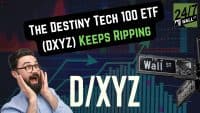Investors have gotten used to seeing new Dow Jones Industrial Average (DJIA) and S&P 500 highs almost each week this year. That is with turmoil in Ukraine, Iraq, Syria and now again in Israel. The problem is that August is fast approaching. It is not just a concern that many investors and traders will be sneaking out of the office for their last family vacations of the summer. August is just a really crummy month for the stock market.
24/7 Wall St. follows calendar, seasonal and cyclical trends all the time, but the Stock Trader’s Almanac specializes in following these trends. Rather than using historical and forecasting patterns for a weather almanac, they look for historical and forecasting patterns in the financial markets.
The warning from the Stock Trader’s Almanac is clear: August is the worst-performing month for broad stock market indexes going back to 1988. This was the exact opposite from 1901 to 1951, but most of us were not exactly around back then to bother with the comparisons of the country’s demographics then versus now. Their note for August: it is the worst DJIA and S&P 500 month since 1987, with average declines of 1.3% and 1.0%, respectively.
ALSO READ: 6 Analyst Stocks Under $10 With Strong Upside Potential
Several factors have contributed to this August negative market correlation through time. These include a short 45-day bear market caused by turmoil in Russia, an Asian currency crisis and the Long-Term Capital Management debacle. Also, Saddam Hussein triggered a 10% drop in August 1990. Sizable back-to-back declines in 2010 and 2011 have widened Augusts’ average losses. More expanded data is available at StockTradersAlmanac.com.
24/7 Wall St. does not disagree with August being a bad month historically, but we would offer up that the seasonality begins to work in the favor of investors after August in certain sectors. It is a month that often allows stock pickers to best position themselves in stocks and sectors that have pulled back handily.
Another issue we have going into August particular to 2014 is that the S&P 500 index is already up over 7% so far this year. That is on the heels of better than 30% in total return in 2013. The biggest concern at 24/7 Wall St. is that the S&P 500 is now within about 4% of having risen a whopping 200% from the March 2009 crush-depth lows that marked the bottom. This bear market soon will be five and a half years old, and we have not seen any correction worth noting in longer than we would care to admit. S&P and DJIA stock valuations are elevated in many sectors, some of which might be signaling severe valuation alerts when you consider that the Federal Open Market Committee (FOMC) is expected to start hiking interest rates in 2015.
ALSO READ: 5 Huge Biotech Catalysts Right Around the Corner
We are not yet buying into the bear market pundits’ endless calls for a stock market crash. Those market crash comments keep coming via the financial media, but the bull keeps rolling over them.
24/7 Wall St. recently gave its own version of 11 ways to avoid a stock market crash while still staying in the market.
Stay tuned.
Is Your Money Earning the Best Possible Rate? (Sponsor)
Let’s face it: If your money is just sitting in a checking account, you’re losing value every single day. With most checking accounts offering little to no interest, the cash you worked so hard to save is gradually being eroded by inflation.
However, by moving that money into a high-yield savings account, you can put your cash to work, growing steadily with little to no effort on your part. In just a few clicks, you can set up a high-yield savings account and start earning interest immediately.
There are plenty of reputable banks and online platforms that offer competitive rates, and many of them come with zero fees and no minimum balance requirements. Click here to see if you’re earning the best possible rate on your money!
Thank you for reading! Have some feedback for us?
Contact the 24/7 Wall St. editorial team.



